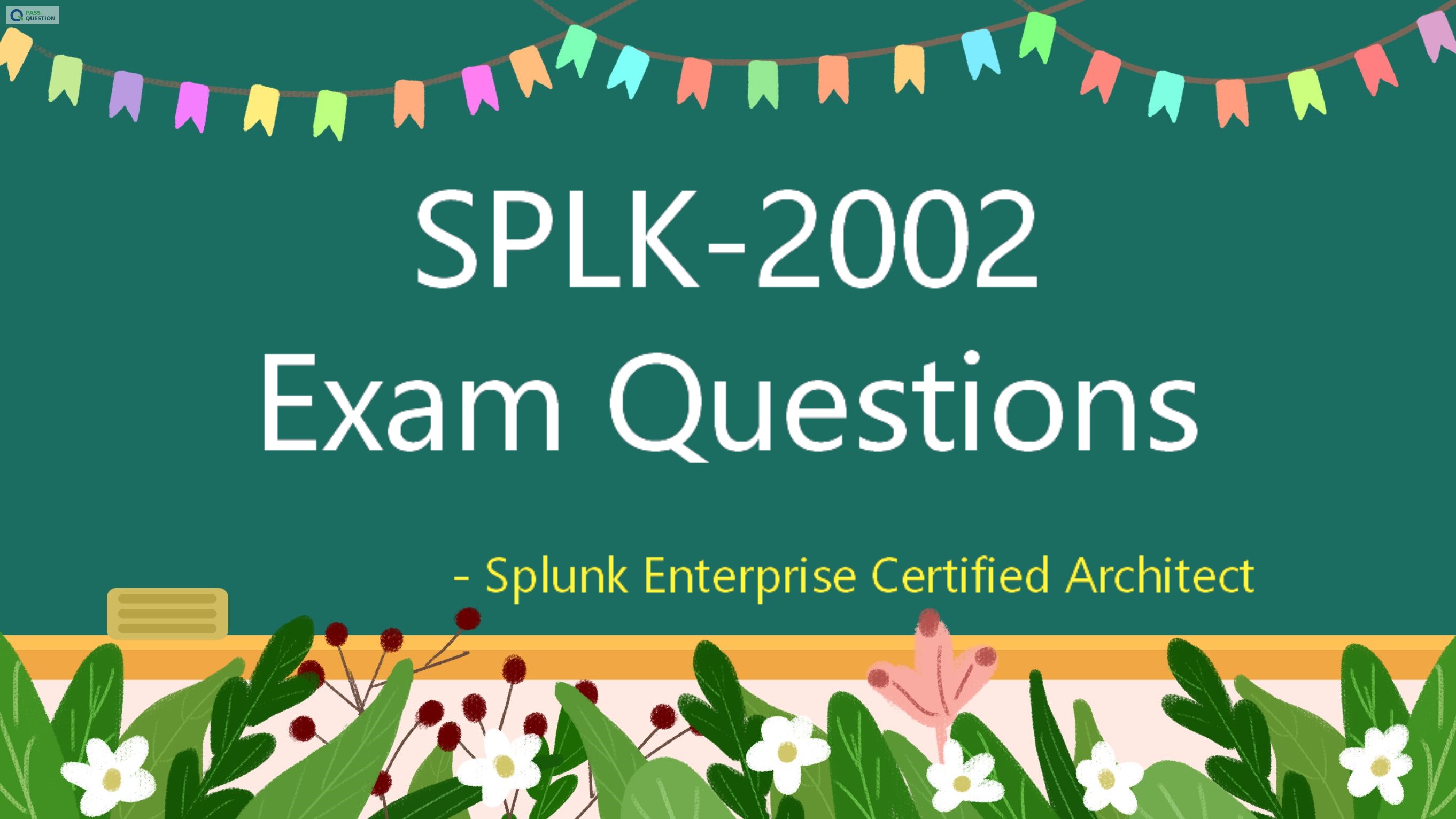SPLK-2002 Exam Questions - Splunk Enterprise Certified Architect
SPLK-2002 exam is a hot exam for Splunk Enterprise Certified Architect. PassQuestion provides SPLK-2002 Exam Questions which are very close to the content of the formal examination, it can ensure you pass your exam in the first time to participate in the Splunk Enterprise Architect certification SPLK-2002 exam. PassQuestion SPLK-2002 Questions and Answers include all the knowledge that must be mastered for the purpose of passing the Splunk SPLK-2002 exam.

Splunk Enterprise Certified Architect SPLK-2002 Exam Description
A Splunk Enterprise Certified Architect has a thorough understanding of Splunk Deployment Methodology and best-practices for planning, data collection, and sizing for a distributed deployment and is able to manage and troubleshoot a standard distributed deployment with indexer and search head clustering. This certification demonstrates an individual's ability to deploy, manage, and troubleshoot complex Splunk Enterprise environments.
The Splunk Enterprise Certified Architect exam is the final step towards completion of the Splunk Enterprise Certified Architect certification. This highly technical certification exam is an 87-minute, 90-question assessment which evaluates a candidate’s knowledge and skills in Splunk Deployment Methodology and best-practices for planning, data collection, and sizing, managing, and troubleshooting a standard with indexer and search head clustering.
General Guidelines for SPLK-2002 Content
Requirements definition
Index and infrastructure planning
Clustering Overview
Forwarder and Deployment
Integration
Splunk Support model
Splunk troubleshooting methods and tools
Clarifying the problem, installation, licensing, and crash problems
UI and search problems
Configuration problems
Deployment problems
User management problems
Large-scale Splunk deployment overview
Single-site (high-availability) indexer cluster, multi-site (disaster-recovery) indexer cluster
Indexer cluster management and administration
Indexer discovery forwarder configuration
Search head cluster
Search head cluster management and administration
KV Store collection and lookup management
View Online Splunk Enterprise Architect SPLK-2002 Free Questions
1.Which of the following will cause the greatest reduction in disk size requirements for a cluster of N indexers running Splunk Enterprise Security?
A. Setting the cluster search factor to N-1.
B. Increasing the number of buckets per index.
C. Decreasing the data model acceleration range.
D. Setting the cluster replication factor to N-1.
Answer: D
2.Stakeholders have identified high availability for searchable data as their top priority.
Which of the following best addresses this requirement?
A. Increasing the search factor in the cluster.
B. Increasing the replication factor in the cluster.
C. Increasing the number of search heads in the cluster.
D. Increasing the number of CPUs on the indexers in the cluster.
Answer: B
3.Search dashboards in the Monitoring Console indicate that the distributed deployment is approaching its capacity.
Which of the following options will provide the most search performance improvement?
A. Replace the indexer storage to solid state drives (SSD).
B. Add more search heads and redistribute users based on the search type.
C. Look for slow searches and reschedule them to run during an off-peak time.
D. Add more search peers and make sure forwarders distribute data evenly across all indexers.
Answer: C
4.A Splunk architect has inherited the Splunk deployment at Buttercup Games and end users are complaining that the events are inconsistently formatted for a web sourcetype. Further investigation reveals that not all web logs flow through the same infrastructure: some of the data goes through heavy forwarders and some of the forwarders are managed by another department.
Which of the following items might be the cause for this issue?
A. The search head may have different configurations than the indexers.
B. The data inputs are not properly configured across all the forwarders.
C. The indexers may have different configurations than the heavy forwarders.
D. The forwarders managed by the other department are an older version than the rest.
Answer: C
5.A customer has installed a 500GB Enterprise license. They also purchased and installed a 300GB, no enforcement license on the same license master.
How much data can the customer ingest before search is locked out?
A. 300GB. After this limit, search is locked out.
B. 500GB. After this limit, search is locked out.
C. 800GB. After this limit, search is locked out.
D. Search is not locked out. Violations are still recorded.
Answer: D
6.What does the deployer do in a Search Head Cluster (SHC)? (Select all that apply.)
A. Distributes apps to SHC members.
B. Bootstraps a clean Splunk install for a SHC.
C. Distributes non-search related and manual configuration file changes.
D. Distributes runtime knowledge object changes made by users across the SHC.
Answer: A
- TOP 50 Exam Questions
-
Exam
All copyrights reserved 2025 PassQuestion NETWORK CO.,LIMITED. All Rights Reserved.

